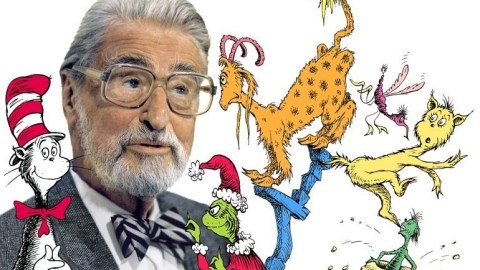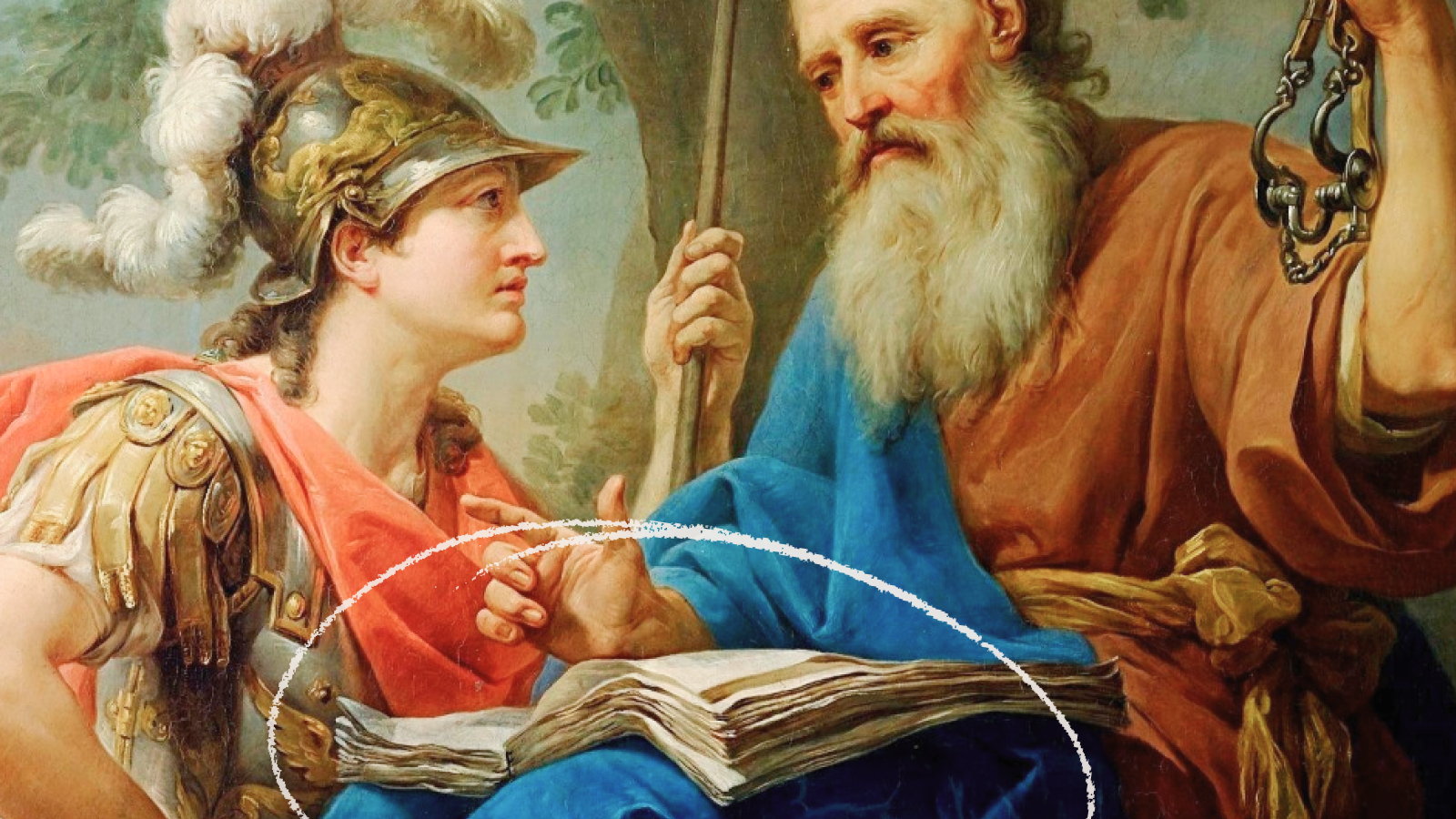A new Dr. Seuss book — ‘Horse Museum’ — is coming out this fall

Dr. Seuss Wikimedia
- The new book will be titled Dr. Seuss’s Horse Museum.
- Author of 45 children’s books, Dr. Seuss’s profundity mixed seamlessly with his simplicity.
- Revisit and explore these timeless classics by yourself and with your children.
Publisher Random House has announced that a new Dr. Seuss book, Horse Museum, will be released this fall. In it, a horse guides children through a tour of an art museum, teaching them how we all see the world in different ways.
The book’s release on September 3 will mark nearly 30 years since the legendary Dr. Seuss — born Theodor Seuss Geisel — passed away. The original manuscript for the never-released book was discovered in the late author’s La Jolla home back in 2013.
For Horse Museum, illustrator Andrew Joyner’s scenes are inspired by Seussian fashion. Artwork in the museum are also featured in the style of Pablo Picasso and other renowned artists.
Alongside the manuscript for Horse Museum were also some original sketches from the author, which helped Joyner, as well as the unpublished manuscript for What Pet Should I Get?, which became a #1 New York Times bestseller in 2015.
In the new book, other iconic Seuss characters — the Grinch, the Cat in the Hat, and Horton the Elephant — will make cameos.
Cathy Goldsmith, one of the last Random House publishing executives to have worked with Geisel while he was alive is overseeing the project. She’s ecstatic to be bringing Dr. Seuss to a whole new generation of readers.
“I remember fondly the days when Ted would come to Random House to hand-deliver his latest work, which included reading aloud to staff gathered in a conference room… Poring over the manuscript and Ted’s original sketches for Dr. Seuss’s Horse Museum brought me right back to those days, and I continue to be so honored to bring his brilliant work to today’s young readers.”
Dr. Seuss holds a special place in the hearts of children worldwide. His wild-eyed creatures, zany four-beat rhymed couplets and otherworldly fauna and flora blasted the imagination into formation. A socially conscience man and whimsical intellect to match, Dr. Seuss is still by and large the greatest American children’s book author of our time.
Who was Dr. Seuss?
Theodor Seuss Geisel was born in 1904 and wrote 45 children’s books throughout the years and some 60 books in total. All of his books still remain in print. Beyond millions have read Dr. Seuss’s fantastical stories. Topping bestseller lists, the Dr. Seuss canon has already sold more than 600 million copies and has been translated into more than 20 languages.
Yet in spite of this worldwide renown, the cultural icon we now revere was once a struggling artist. As the famous story goes, Geisel received 27 rejection notices on his first book. American film producer Brian Grazer recounts the story in his book: A Curious Mind: The Secret to a Bigger Life.
After walking home one day after the book’s 27th rejection, with the manuscript and drawings for Mulberry Street under his arm, Geisel bumped into an old peer from Dartmouth College, Mike McClintock. He asked what Geisel was carrying. Geisel quipped:
That’s a book no one will publish and I’m lugging it home to burn.
McClintock who just so happened to have been made editor of children’s books at Vanguard invited Geisel to his office. The publisher bought Mulberry Street that same day. When the book was finally released, a renowned book reviewer from The New Yorker remarked that
They say it’s for children, but better get a copy for yourself and marvel at the good Dr. Seuss’s impossible pictures and the moral tale of the little boy who exaggerated not wisely but too well.
A few Dr. Seuss books to revisit and read with your children
Although he did admit that “there’s an inherent moral in any story,” Dr. Seuss was never an outright moralizer. He also wrote sophisticated verse in a simplified manner in a way that made it easy for any child to understand. His illustrations were far out, and the combination between them and his words seemed to always strike with an authentic message.
His big idea at the time was that children would learn how to read best by devouring entertaining books with an easy going vocabulary. That seems obvious now, but was revolutionary when Geisel started:
“I don’t think my book is going to change society. But I’m naïve enough to think that society will be changed by examination of ideas through books and the press, and that information can prove to be greater than the dissemination of stupidity.”
The author seemed to have intuitively grasped the essential concepts of the developing youthful mind. As children grow and come into their own, an inherent and natural strife emerges. As much as children wish to break free and become their own people, they still must depend on parental guidance. Through Dr. Seuss’s books, adults serve as the vocal voyaging oration through imaginative maturation and youthful creation.
For those who’ve read Dr. Seuss before, it’s time to take another look by yourself and with your children. And time to let the cycle continue.
The Cat in the Hat
The Cat in the Hat published in 1957, is the book that rocketed Seuss from a successful author to legendary children’s book phenomenon.
Everything we’ve come to know and love about Seuss is in this book. The dynamic verse and beautiful illustrations take us to somewhere new and quite bizarre as Dr. Seuss paints a compelling and educationally immersive world. It’s also not without its biting satire and political edge either. In a set of 1983 interviews from Jonathan Cott, Geisel specifically remarked about this individual book.
“I’m subversive as hell! I’ve always had a mistrust of adults… Hilaire Belloc, whose writings I liked a lot, was a radical. Gulliver’s Travels was subversive, and both Swift and Voltaire influenced me. The Cat in the Hat is a revolt against authority, but it’s ameliorated by the fact that the cat cleans up everything in the end.”
The Lorax
Considered by Seuss to be his best book, The Lorax, published in 1971, is Seuss’s paean to environmentalism. Critics were not fond of it originally and there were even some calls to remove it from certain school curriculums. At the cusp of a new movement, Dr. Seuss speaks out against the mindless destruction of natural beauty and splendor of the Earth in the pursuit of a never-ending more-mentality. He wanted to create something that addressed rampant industrialism without it being boring, he stated:
“The Lorax came out of me being angry. In The Lorax I was out to attack what I think are evil things and let the chips fall where they might.”
One of the most moving pieces of environmental literature seems to come from a children’s book. It’s disconcerting to hear this message disparaged and critiqued by naysayers throughout the years, as the message is something we must all take to heart – we cannot sacrifice ourselves and our planet for the forsaken ideal of so-called progress.
Oh, the Places You’ll go!
A hit with the high school and college graduate crowd – Oh, the Places you’ll go! – was Dr.Seuss’s last published story while he was still alive. A book for both children and adults, it celebrates both the ups and downs of life. It instructs its reader to go along with life’s wild journey wherever it may take you. Some of it will be daring and thrilling, other times will be dark and scary. Let these simple rhymes bring you into the flow of your own life and figure out what it’s all about.
“It’s opener there
in the wide open air.
Out there things can happen
and frequently do
to people as brainy
and footsy as you.
And then things start to happen,
don’t worry. Don’t stew.
Just go right along.
You’ll start happening too.”
-Dr. Seuss





